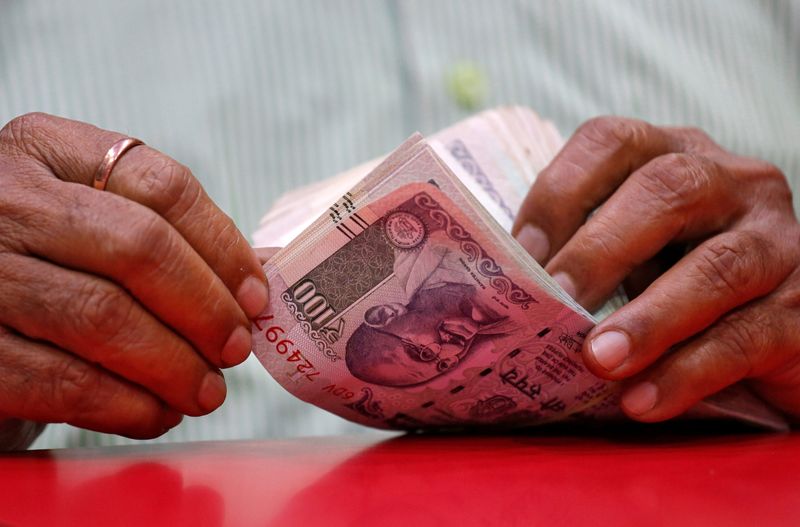MUMBAI (Reuters) -The Indian rupee fell to a historic low on Monday, while bond yields surged as a sharp rise in global prices of crude oil stirred concern about domestic inflation, strengthening prospects of interest rate hikes by the central bank.
India imports more than two-thirds of its oil needs. High prices are likely to widen the country’s trade and current account deficits and boost imported inflation.
The partially convertible rupee ended at 76.96 against the dollar, just off its record low of 76.97 hit earlier in the session. It closed Friday at 76.16.
The rupee struck its previous record low of 76.9050 on April 22, 2020 amid the COVID-19 pandemic.
Brent crude soared to near $130 a barrel, its highest since 2008, as the United States and European allies mulled a Russian oil import ban while delays in the potential return of Iranian crude to global markets fuelled tight supply fears.
The fall in local shares also further added pressure on the rupee as foreign investors continued to dump riskier assets. [.BO]
Latest data showed foreign investors had sold $862.56 million worth shares on Thursday, taking the total sales in 2022 to $11.25 billion.
“Stocks continued to trade in the red and we saw sustained selling by foreign funds. Though RBI was likely selling dollars sporadically, they wouldn’t want to come in too heavily against the tide,” a senior trader at a foreign bank said.
The Reserve Bank of India typically sells dollars via state-run banks to prevent sharp moves in the rupee. With forex reserves at $631.53 billion by early March, traders feel it has enough firepower to avert a much sharper fall in the currency.
The key concern, however, is whether the RBI will be forced to act to contain inflation by raising interest rates in the aftermath of the Ukraine crisis.
So far, the RBI has reiterated its commitment to reviving economic growth and keeping policy accommodative.
Last week, economists and analysts said India’s trade and current account deficits were likely to widen, putting pressure on the rupee, as global oil prices surge and the domestic economy re-opens from a third wave of the pandemic.
The benchmark 10-year bond yield ended trading at 6.89%, up 8 basis points on the day, its biggest single-session rise since the sell-off on budget day on Feb. 1 when the government announced a sharply higher-than-expected market borrowing.
Investors will closely monitor the global geo-political situation as well as results of the state elections due to be announced on March 10 for further direction.
“A reversal of the recent losses will be seen only if spot USD/INR pair breaks below 76.50. The pair will have upside targets of 77.30/77.52 levels until support holds,” analysts at Emkay Global Financial Services wrote in a note.
(Reporting by Swati Bhat; Editing by Shri Navaratnam, Clarence Fernandez and Krishna Chandra Eluri)






















